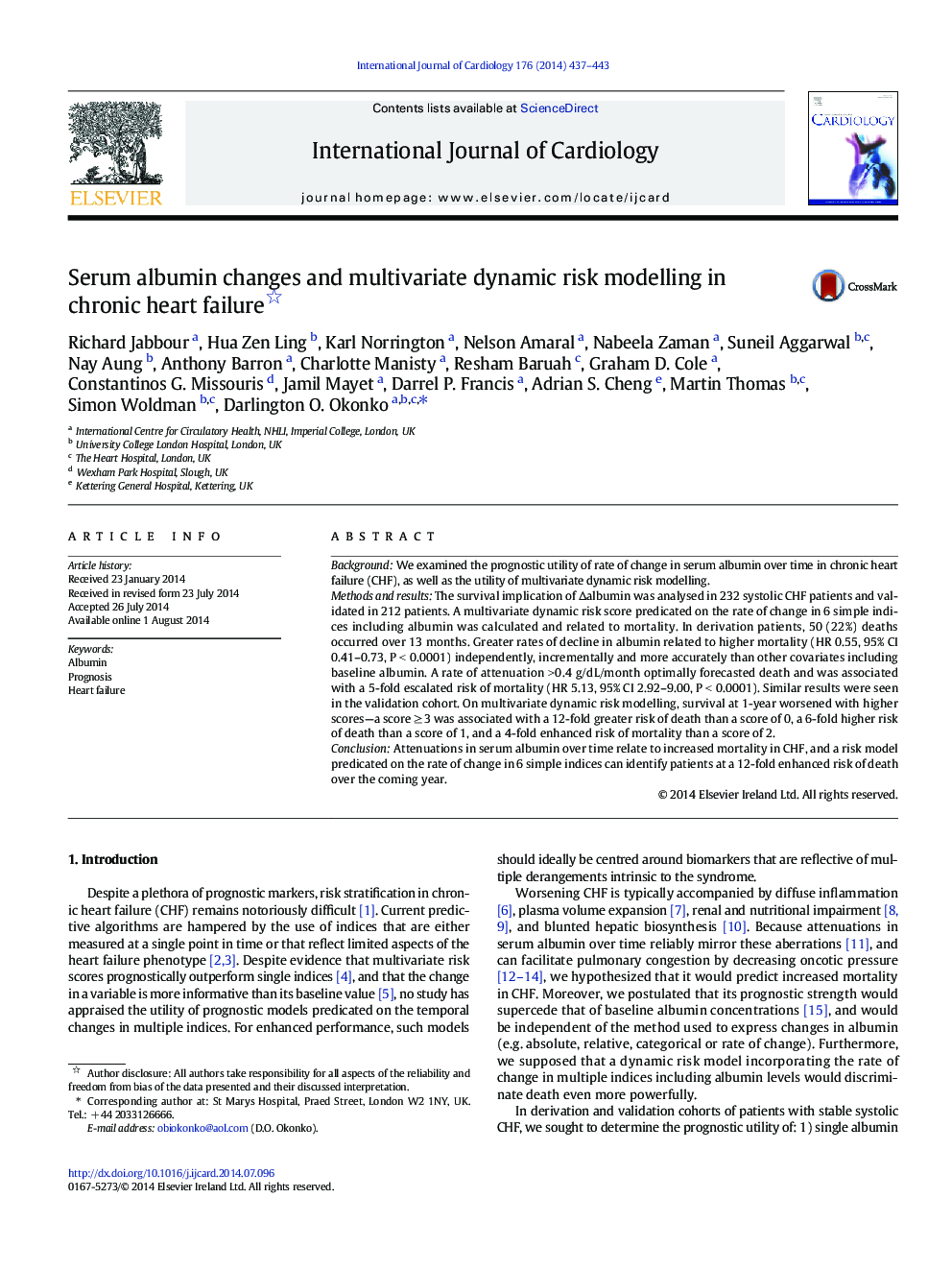| کد مقاله | کد نشریه | سال انتشار | مقاله انگلیسی | نسخه تمام متن |
|---|---|---|---|---|
| 5970920 | 1576179 | 2014 | 7 صفحه PDF | دانلود رایگان |
BackgroundWe examined the prognostic utility of rate of change in serum albumin over time in chronic heart failure (CHF), as well as the utility of multivariate dynamic risk modelling.Methods and resultsThe survival implication of âalbumin was analysed in 232 systolic CHF patients and validated in 212 patients. A multivariate dynamic risk score predicated on the rate of change in 6 simple indices including albumin was calculated and related to mortality. In derivation patients, 50 (22%) deaths occurred over 13 months. Greater rates of decline in albumin related to higher mortality (HR 0.55, 95% CI 0.41-0.73, P < 0.0001) independently, incrementally and more accurately than other covariates including baseline albumin. A rate of attenuation > 0.4 g/dL/month optimally forecasted death and was associated with a 5-fold escalated risk of mortality (HR 5.13, 95% CI 2.92-9.00, P < 0.0001). Similar results were seen in the validation cohort. On multivariate dynamic risk modelling, survival at 1-year worsened with higher scores-a score â¥Â 3 was associated with a 12-fold greater risk of death than a score of 0, a 6-fold higher risk of death than a score of 1, and a 4-fold enhanced risk of mortality than a score of 2.ConclusionAttenuations in serum albumin over time relate to increased mortality in CHF, and a risk model predicated on the rate of change in 6 simple indices can identify patients at a 12-fold enhanced risk of death over the coming year.
Journal: International Journal of Cardiology - Volume 176, Issue 2, 20 September 2014, Pages 437-443
